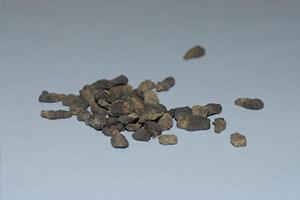
One of the realities of beekeeping is that honey bees and their colonies are under constant attack from a number of biotic (living) stressors. These include bacteria, fungi, viruses, mites, other insects, spiders, birds, reptiles/amphibians, and mammals. As a result, beekeepers spend considerable time inspecting colonies for and remedying problems related to biotic stressors.
State apiary inspection laws
The truth is that all colonies have some sort of ailment at any given time. The majority of biotic colony stressors pose low to moderate threats to colonies. However, there are some biotic stressors that can kill bees or entire colonies if they are not addressed in a timely manner. Thus, beekeepers must adopt management practices that eliminate the presence, or mitigate the impact, of these stressors in honey bee colonies.
In this article, I will discuss the most common biotic stressors affecting honey bee colonies. This is not intended to be a thorough review of the biology and control of each stressor (I plan those articles for publication in future issues of the ABJ). Instead, consider this an introduction to the stressors that can kill bee colonies or severely limit their productivity. Every beekeeper, new or seasoned, must be aware of these stressors so that he/she can know how to manage their colonies appropriately. Additionally, every beekeeper must develop a control strategy that corresponds to his/her needs and those of the bees.
For each stressor, I briefly discuss its biology and control and include its scientific name, where appropriate, in parentheses. I also note the potential threat it poses to colonies (low, moderate, significant). It is important to realize that I ranked the stressors in Table 1 simply based on my views of how they impact colonies. In general, any stressor can have low, moderate, or significant impact on affected colonies and the level of the severity of the impact can vary widely by time of year or location. Consequently, my ranking of each stressor is only for reference purposes and not intended to be a static designation.
Low threat – The stressor can kill bees or colonies, but usually does not. Thus, the beekeeper must be aware of its potential to cause harm and remedy the situation if necessary. Usually, stressors that present a low threat do not need to be managed actively and chemical control remedies usually are not necessary to bring the stressors under control. Stressors in this category usually only affect a small number of colonies in an apiary. In severe circumstances, low threat stressors can manifest as moderate threats and, correspondingly, would need to be controlled.
Moderate threat – Stressors that present a moderate threat often are common (i.e. in/affect a high percentage of colonies) and can cause significant damage if not addressed appropriately. Often, moderate threat stressors can be managed via non-chemical control options, though intervention with chemical treatments can be necessary as a last resort. Moderate threat stressors can escalate into serious threats in some areas and in certain circumstances. Consequently, beekeepers must monitor for and actively manage moderate threat stressors to limit their overall impact on colonies.
Significant threat – Significant threats are those threats that usually are widespread and typically kill colonies if the threat is not managed actively. In fact, these stressors must receive the full attention of beekeepers who may or may not have a viable list of control options available for the stressors (for the viruses, for example). This list includes a couple of stressors that are believed to harm colonies significantly, even if the level of threat they pose is not known with certainty.
Bacteria
1) American foulbrood, AFB (Paeni-bacillus larvae): American foulbrood is a significant bacterial disease that infects bee larvae that ingest the bacterial spores. It has a widespread distribution. American foulbrood kills capped stages of immature bee development, most notably the honey bee prepupa and young pupae. The bees get infected as larvae and die as prepupae/young pupae (Figure 1). This is very important to know as it is one of the key differences between AFB and European foulbrood. One of the reasons that AFB is such a serious threat to honey bee colonies is that the bacterium that causes AFB forms a spore that is difficult to kill. In fact, it is so difficult to kill the spore that most bee inspection regulatory agencies require that infected colonies be burned. Once a colony has the disease, it cannot be saved. The best way to control AFB is to start with AFB-free equipment/bees, use AFB-resistant bee stock, and treat colonies prophylactically with an antibiotic to keep one’s colonies from ever getting the disease.
2) European foulbrood (Melissococcus plutonius): European foulbrood (EFB) is bacterial disease affecting honey bee brood and caused by a non-spore forming bacterium. Like AFB, EFB has a widespread distribution. Unlike AFB, EFB poses a moderate threat to infected colonies. European foulbrood infects and kills honey bee larvae, or the uncapped stage of immature honey bees. Generally speaking, infected colonies recover from EFB during strong honey flows, by being requeened, or by being treated with an antibiotic. Because EFB is not caused by a spore-forming bacterium, it can be controlled after infection with an antibiotic.
Fungi
3) Chalkbrood disease (Ascosphaera apis): Chalkbrood disease is caused by a fungal pathogen that kills immature honey bees. It is a moderate threat to colonies. Chalkbrood-infected larvae (Figure 2) die and become overgrown with …
Photo Caption
Chalkbrood mummies collected from an infected colony.


